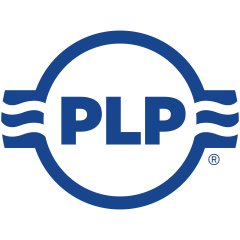- The primary task of the zinc coating is the protection of the steel base against corrosion. Matters of esthetics and decorative qualities are secondary. The zinc layer is a coating that undergoes oxidation processes and changes its appearance during the period of use. The PLP Poland (Belos) S.A. Galvanization Plant has no means to ensure the uniform appearance of the coating.
- The surface of elements and structures to be galvanized should be free of lapping, scales, sharp edges, chips in holes, jagged edges caused by cutting, welding drops, residues of paint layer, residues of paint marks or of stamping, marking, free of grease, emulsion, other materials used in layout, drilling or welding. These contaminants disturb the process of creating the zinc coating. The PLP Poland (Belos) S.A. Galvanization Plant holds no responsibility for the quality loss or discontinuities of the layer caused by the above.
- Surface irregularities of the element such as slag pitting, grooves, cavities in weld faces, corrosion pits, lapping, delamination and welding seams become visible only in the galvanization process. The PLP Poland (Belos) S.A. Galvanization Plant has no influence on this and takes no responsibility for it.
- Welded joints should be made using a semi-automatic method in gas shielding. In case of welding with an electrode, the weld covering should be precisely removed. The joint should be tight (continuous weld) – it is then possible to avoid rusty leaks of etching media after galvanization. The PLP Poland (Belos) S.A. Galvanization Plant does not take responsibility for “rusty leaks” caused by leaking joints.
- All elements intended for hot-dip galvanization shall be equipped with appropriate technological openings (cut-outs) which allow for free flow of zinc inside and outside the elements as well as for air to vent. The product should be free of spaces which may close during dipping, as this may cause a risk of explosion. The venting openings should have a diameter of no less than 8 mm and be located no further than 15 mm from the end, Besides, the product should be equipped with additional openings allowing for its suspension. In case of inappropriately located openings, risers are possible in the places of zinc leaking. Before directing the product to be hot-dip galvanized, please consult our staff for the locations of the openings to be drilled.
- The product should consist of elements made of a single grade of steel, with similar wall thickness due to varying times of heating and cooling. In case the external surface of the galvanized product is not uniform (chemical composition, surface structure, contaminations non-removable in chemical processing), the zinc layer may vary in a single object.
- Most of the available steel grades presented in the PN-88/H-84020 and PN-86/H-84018 standards may be hot-dip galvanized, but the quality of the obtained zinc layer (gloss, smoothness, thickness, adhesiveness) is different and depends on the chemical composition of steel, especially the content of silicon (Si), carbon (C) and phosphorus (P).
The silicon (Si) and carbon (C) content in steel should not together exceed 0.5 % and the content of silicon should not be within the range between 0.03 % and 0.14 % and above 0.25 %, as the so-called Sandelin effect may be then observed – the zinc coating becomes matte gray and rough, uneven, loses its adhesive characteristics and becomes brittle.
If the steel contains phosphorus, the Esi = Si+2.5xP equivalent should be calculated (where Si and P stand for the percentage of silicon and phosphorus in the steel). The value of the Esi equivalent must also fulfill the above requirements for (Si). In case of steel with silicon content in the unfavorable range, a significant increase of the zinc layer may occur, which may result in a decrease of adhesiveness or abhesiveness of the zinc to the galvanized element.
- In case of objects improperly constructed from the point of view of preparation for galvanization, local air pockets may be formed, leaks of residues from the etching process may occur, which cause brown rusty sagging on the zinc coating, The PLP Poland (Belos) S.A. Galvanization Plant does not have any responsibility for “rusty leaks” formed after hot-dip galvanization.
- The allowance of the dimensions for the openings for screws or bolts should be ~2 mm.
- The PLP Poland (Belos) S.A. Galvanization Plant has no duty to clear and calibrate the openings and threads.
- During the process of hot-dip galvanization, deformations caused by stress from rolling, bending or welding may occur. The PLP Poland (Belos) S.A. Galvanization Plant has no duty to straighten the elements which were deformed during galvanization due to internal stress.
- The zinc layer on surfaces formed by thermal cutting may not fulfill the thickness and adhesion properties. This is related to changes in the structure of material caused by cutting. The PLP Poland (Belos) S.A. Galvanization Plant has no influence on the above.
- In atmospheric conditions, the zinc surface forms a thin layer of zinc oxide which then transforms into a hydroxide, carbonate and basic zinc carbonate. These products of natural corrosion are insoluble in water. These compounds form a white tarnish called the “white rust”. This cannot be a reason for a complaint, as far as the requirements regarding the minimal thickness of the zinc layer are fulfilled.
- Before the hot-dip galvanization, the Client should notify the PLP Poland (Belos) S.A. Galvanization Plant on the expected further processing of the galvanized element (painting, protection against “white corrosion”, protection required for transport).
Please contact us in all cases in which doubts regarding the preparation of elements for hot-dip galvanization are raised. It is a good practice to provide a drawing, photograph or technical drawing (by e-mail).



